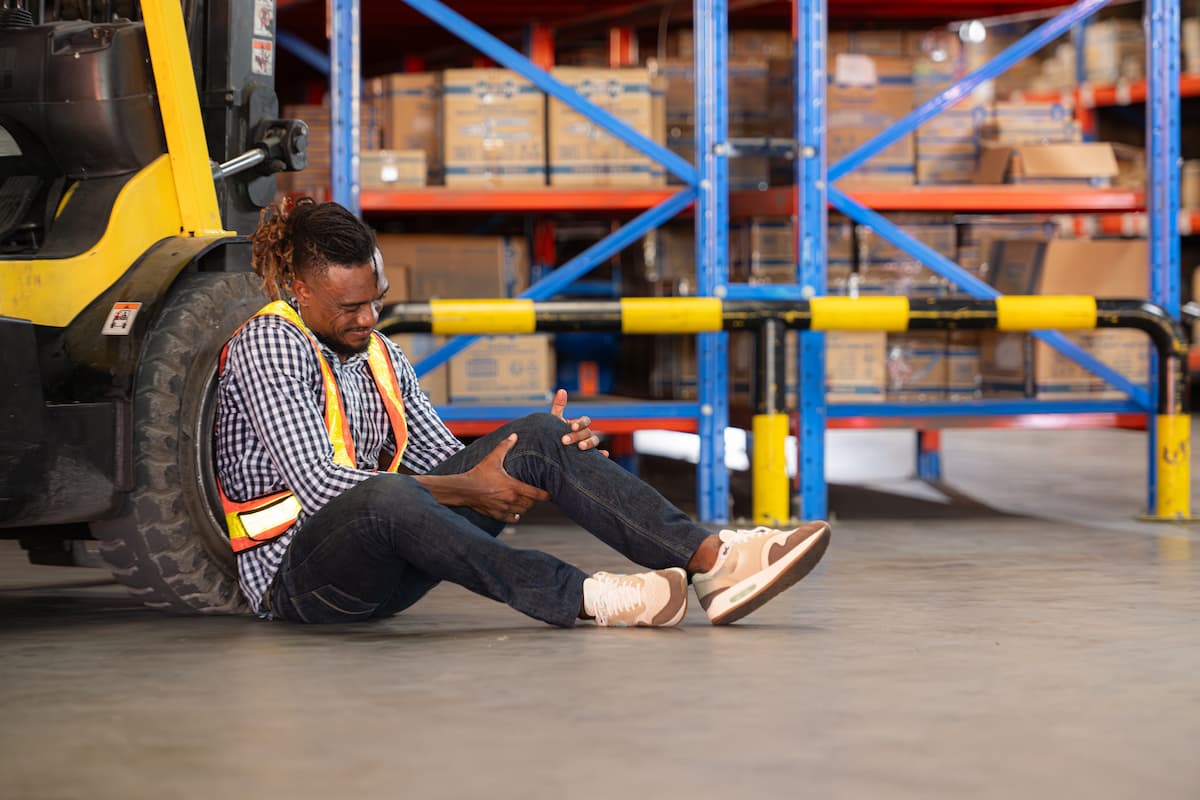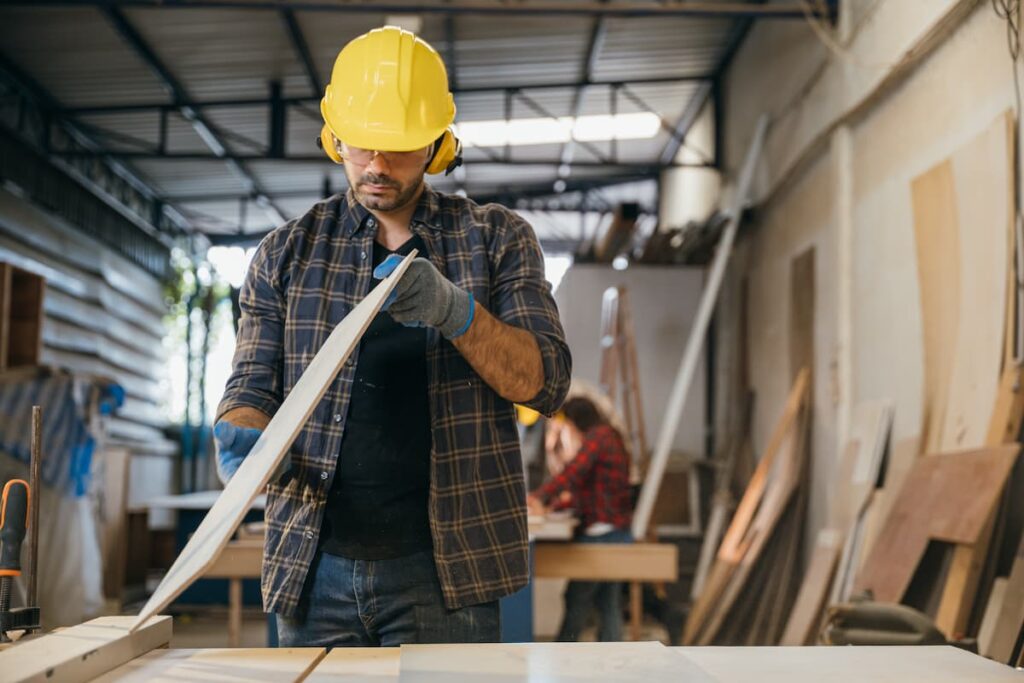Slip and Fall at Work Settlements: Who Pays You After a Workplace Accident?

Slip and fall accidents are one of the leading causes of serious injuries and death in the workplace. And in California, that number (on average) is much higher as compared to the rest of the country.
Another sad reality is that when these injuries do happen, victims usually don’t get what they’re entitled to. Insurance companies tend to offer lowball settlements, and most people just accept them.
Yet what most injured workers don’t realize is that a slip and fall at work might entitle you to compensation from multiple sources—not just workers’ comp. We’re talking about third-party claims that could significantly increase your recovery. But the system isn’t designed to tell you this.
The Reality of Workplace Falls (And Why They Matter More Than You Think)
Workplace slip and fall accidents aren’t minor incidents. They cause 450,540 injuries and 865 deaths every year and generate $11 billion in annual costs. That’s 20% of all workplace injury expenses. They’re the primary cause of lost workdays, ranking third among all employer-related workplace injuries.
In California specifically, the numbers tell a stark story. Workers’ compensation settlements average $21,800, though most fall between $2,000 and $60,000. Slip and fall specific settlements can range between $15,000 and $45,0000, while serious injuries can fetch hundreds of thousands of dollars or even millions.
Common Workplace Environments Where Slip and Falls Occur

Your workplace shapes your risk profile in ways you might not expect. Each environment creates unique hazards that affect both your likelihood of falling and your potential compensation.
1. Construction Site Slip and Fall Hazards
Construction workers face the highest risk of any industry. They account for 47.4% of all fatal workplace falls despite representing a much smaller portion of the overall workforce. The construction industry accounts for 38.4% of all workplace deaths resulting from falls, slips, and trips.
These numbers represent workers falling from scaffolding, slipping on wet concrete, and tripping over equipment. The multi-employer nature of construction sites creates complex liability situations – and often, better compensation opportunities.
2. Restaurant and Food Service Industry Accidents
The food service industry presents its own nightmare scenario. Over 3 million food service employees get injured annually from slip and fall accidents. Grease on kitchen floors. Water tracked in from dishwashing stations. The constant rush during peak hours that makes careful movement impossible.
These accidents cost the industry over $2 billion annually, with costs increasing 10% each year. For workers, this means employers and insurers are increasingly aggressive about limiting payouts.
3. Healthcare Facilities and Hospital Falls
Healthcare workers face unique and constant dangers. California hospitals alone recorded 21,500 injuries, with nearly 13,000 thousand requiring time off and nearly 60% of injured healthcare workers missing shifts.
Healthcare workers navigate a minefield of hazards. From freshly mopped patient rooms to spilled medications to the need to move quickly during emergencies, they’re constantly at risk, often while trying to help others.
4. Office Building and Corporate Space Falls
Don’t assume office work means safety. Cluttered walkways, worn carpeting, and poorly maintained stairwells can create serious hazards. Office workers might not expect workplace injuries, which often means they’re unprepared when accidents happen.
5. Retail and Grocery Store Slip and Fall Accidents
Retail environments combine customer traffic with constant restocking, creating perpetual hazards, such as pilled products, wet entrance areas during rain, and boxes left in aisles during restocking. Each shift brings new dangers.
6. Warehouse and Distribution Center Injuries
The push for faster shipping means warehouse workers face increasing pressure and risk. Condensation from refrigerated areas, oil leaks from forklifts, and the sheer pace of operations create constant slip and fall hazards.
7. Manufacturing and Factory Floor Accidents
California manufacturing facilities reported 35,800 injuries in 2023, with 25,300 causing missed work days – a 70.7% rate that slightly exceeds construction. Industrial lubricants, metal shavings, and chemical spills create invisible hazards that become especially dangerous when combined with the noise and pace of production lines.
Manufacturing injuries often result in higher settlements due to the specialized nature of the work and the difficulty injured workers face returning to their specific trade.
8. Hotel and Hospitality Industry Falls
Hotel workers navigate constantly changing hazards. Housekeeping staff deal with wet bathroom floors and heavy cleaning equipment. Maintenance workers face pool deck dangers and parking lot hazards. Kitchen staff in hotel restaurants combine all the risks of food service with the added pressure of room service timing.
The hospitality industry’s focus on guest experience often means worker safety gets secondary consideration – until someone gets hurt.
Who Pays for Your Workplace Slip and Fall? (The Complete Picture)
This is where things get interesting – and potentially lucrative for injured workers who understand the system.
Workers’ Compensation: Your Guaranteed Safety Net
Workers’ comp is your first line of defense. In California, it provides two-thirds of your average weekly wage, up to $1,704 per week for temporary disability. For permanent disabilities rated 1-99%, you’ll receive $160 to $290 per week. Total permanent disability pays two-thirds of your average weekly wage.
But here’s what they don’t advertise: most workers’ comp settlements fall between $2,000 and $20,000. Only a slight fraction of those result in greater than $60,000. These numbers might cover your medical bills and some lost wages, but they won’t compensate you for pain and suffering or your full wage loss.
Third-Party Claims: The Additional Recovery Most Workers Miss
California Labor Code Section 3864 protects your right to pursue third-party claims beyond workers’ compensation. While you can’t sue your employer directly, you can sue other parties whose negligence contributed to your accident.
Who might be liable? Property owners who lease to your employer. Contractors working on the same site. Equipment manufacturers whose products failed. Maintenance companies that created hazards. Each represents a potential source of additional compensation.
Third-party claims allow recovery for pain and suffering, full wage loss, and other damages not covered by workers’ comp. This isn’t double-dipping. It’s getting fully compensated for your injuries.
Employer Liability: When Your Boss Becomes the Defendant
While workers’ comp usually protects employers from lawsuits, exceptions exist. If your employer intentionally removed safety equipment, knowingly exposed you to dangerous conditions, or committed fraud in handling your claim, they might face direct liability.
Property Owner Liability in Leased Workspaces
Many businesses lease their space. When property owners fail to maintain safe conditions – broken stairs, inadequate lighting, unrepaired hazards – they become potential defendants in your injury claim. This is especially common in multi-tenant buildings, where maintenance responsibilities can become unclear.
Factors That Increase Your Workplace Settlement
Understanding what drives settlement values helps you build a stronger case from day one.
Safety Violations and Employer Negligence
OSHA violations don’t put money directly in your pocket, but they can dramatically increase your settlement value. Here’s how it actually works:
When OSHA cites your employer for safety violations related to your accident, it creates powerful evidence of negligence. Those citations become proof that your employer failed to maintain a safe workplace – evidence that strengthens both your workers’ compensation claim and any third-party liability claims.
Four of OSHA’s top 10 most cited violations involve falls – general fall protection, ladders, scaffolding, and fall protection training. When your employer gets cited for these violations, it shows they knew about the dangers and ignored them.
Permanent Disability and Future Care Costs
Permanent injuries change everything. Amputations average $118,837 in settlements, while fractures average $60,934. Even sprains and strains average $33,589 when they result in permanent limitations.
Lost Earning Capacity in Your Specific Industry
A construction worker who can’t return to physical labor faces different economic losses than an office worker with the same injury. Courts consider your specific career path, advancement opportunities, and industry-specific earning potential.
Failure to Maintain Safe Working Conditions
Documented patterns of safety failures strengthen your case exponentially. Previous accidents, ignored complaints, deferred maintenance – each piece of evidence builds toward higher settlement values.
Tips on Maximizing Your Settlement Compensation
Timing matters. Workers’ comp provides immediate medical coverage and wage replacement while you build your third-party case. You need to reach Maximum Medical Improvement (MMI) before settling – the point where your condition has stabilized.
Timing Your Claims for Maximum Benefit
California law gives you 30 days to report your injury, though reporting immediately is always better. Insurance companies have 90 days to accept or deny your workers’ comp claim. For third-party personal injury claims, you have two years from the date of injury.
Never Accept the First Offer From Insurance Companies
Another critical error: accepting the first settlement offer. Initially denied workers’ comp claims that are later accepted cost 55% more than initially accepted claims – $15,694 versus $10,153. In California specifically, denied-then-accepted claims average $27,419 compared to $16,833 for initially accepted claims.
Your Next Steps: From Injury to Settlement
Knowledge without action won’t pay your bills. Here’s your roadmap forward.
Immediate Actions That Protect Your Claim Value
- Report the accident immediately to your supervisor
- Get medical treatment even if you feel “fine” – adrenaline masks injuries
- Photograph the hazard, your injuries, and surrounding area before anything changes
- Collect witness names and phone numbers
- Never give recorded statements to insurance companies without legal counsel
Documenting Your Specific Workplace Accident
- Write everything down today: what you were doing, what caused the fall, who was present
- Record what supervisors said – their acknowledgment or denial matters
- Track daily pain levels and limitations – this becomes crucial evidence
- Keep all incident reports, texts with coworkers, and medical receipts
Choosing Between Workers’ Comp and Personal Injury Attorneys
- You might need both – workers’ comp attorneys handle administrative claims, while personal injury attorneys pursue third-party damages
- Many firms coordinate both types of claims for maximum recovery
- Don’t delay – California’s two-year statute of limitations starts immediately
Timeline Expectations and Settlement Process
- 7-12% of workers’ comp claims are initially denied but fighting back often succeeds
- Standard cases take 12-18 months; complex cases 18+ months
DK Law has secured millions in settlements for injured workers, with a 99% success rate in workplace accident cases. Call us today for a free consultation. We’ll identify every source of compensation available and fight for the maximum settlement you deserve.
DK All the way
From Your Case to Compensation, we take your case all the way.
Schedule a Free Consultation
Get Expert Legal Advice at Zero Cost.
At DK Law we’re with you – all the way.
Get a Free Consultation with our experts today!
No comments:
Post a Comment